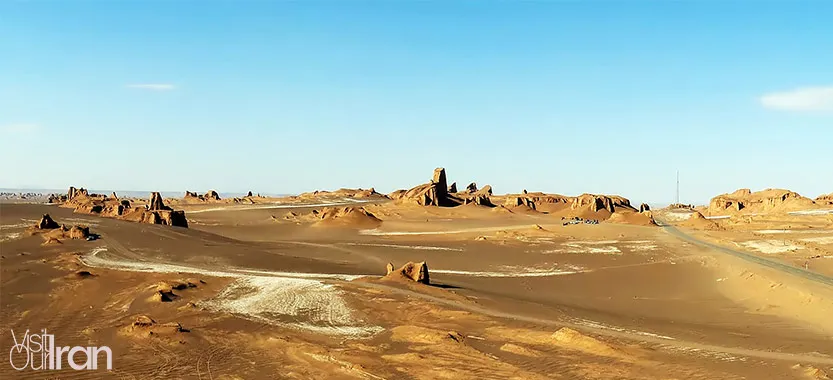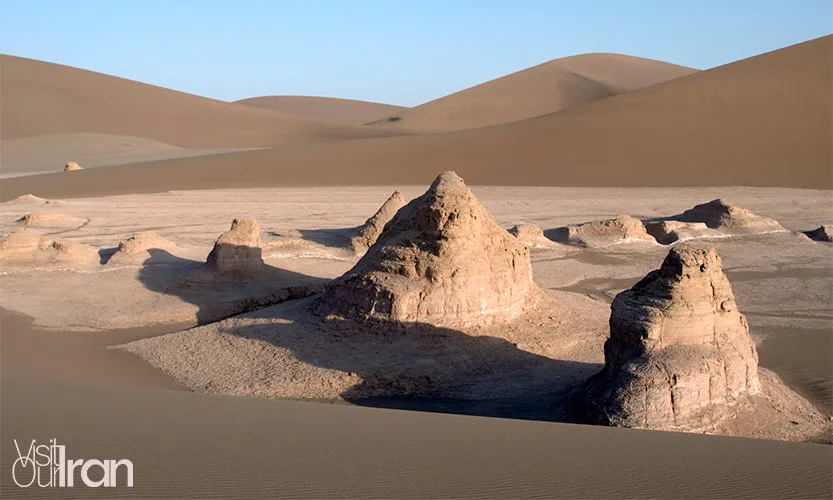Iran’s Lut Desert, new item on UNESCO’s List of World Heritage

The UN Educational, Scientific and Cultural Organization’s (UNESCO) World Heritage Committee included Iran’s Lut Desert on the List of World Heritage, a report said.
The 40th session of the UNESCO committee reviewed the condition of cultural sites protected by the body as well as new proposals to be added to the World Heritage List, the official website of UNESCO reported on Sunday.
Lut Desert in southeast of Iran and seven more historic sites have been registered on the List of World Heritage, according to a statement by the international body.
“The World Heritage Committee, on the last afternoon of its 40th session which opened on 10 July, inscribed eight new sites on the List: one transnational site (in Kazakhstan, Kyrgyzstan and Uzbekistan), and others in Canada, Chad, China, Iraq, Iran, Mexico and Sudan,” the statement reads.
The newly added natural sites are Hubei Shennongjia in Chinese Hubei Province, Mistaken Point in Canada’s island of Newfoundland, Archipiélgo de Revillagigedo in Mexico, Sanganeb Marine National Park and Dungonab Bay — Mukkawar Island Marine National Park in Sudan, Lut Desert in southeast of Iran and a Western Tien-Shan transnational site located in the Tien-Shan mountain system between Kazakhstan, Kyrgyzstan and Uzbekistan.

Lut Desert is a large salt desert in the provinces of Kerman and Sistan and Baluchestan, and is the world’s 25th largest desert. The surface of the sand there has been measured at temperatures as high as 70 °C (159 °F) which is one of the world’s driest and hottest places. Because of its extremely hot temperature, Dasht-e Lut desert is also known as “Gandom Beryan” which means “Roasted Grain”. No wonder why the area has little to zero vegetation with almost no water. It is also known to be the world’s 25th largest desert.
Area of the desert is about 51,800 square kilometres (20,000 sq mi). The other large basin in IRran is the Dasht-e Kavir. During the spring wet season, water briefly flows down from the Kerman mountains, but it soon dries up, leaving behind only rocks, sand, and salt. The desert is divided into three sections: the western, central, and eastern sections. The western is mostly sand mountains. The central section is the largest part of the desert, mostly flat, covered with sand dunes, and also has the lowest altitude among the three sections. Lastly, the eastern part is covered with ridges of large sand dunes which makes it hard to reach.
The sand castles of Dasht-e Lut called Kaluts can be seen in an area 40km east and northeast of Shahdad. These towers cover the western fringe of the desert with an average length of 145 kilometers. Other than the Kaluts, you can also check out the salt mine called Gowd-e Namak, located at the western region of the towers.
If you want to visit Dasht-e Lut desert, be reminded that you can’t go here by public transportation. It’s better to hire a driver or guide who can take you there, or join day tours from Tehran or Kerman.
To read the complete list of UNESCO World Heritage Site, visit our extensive blog post here.